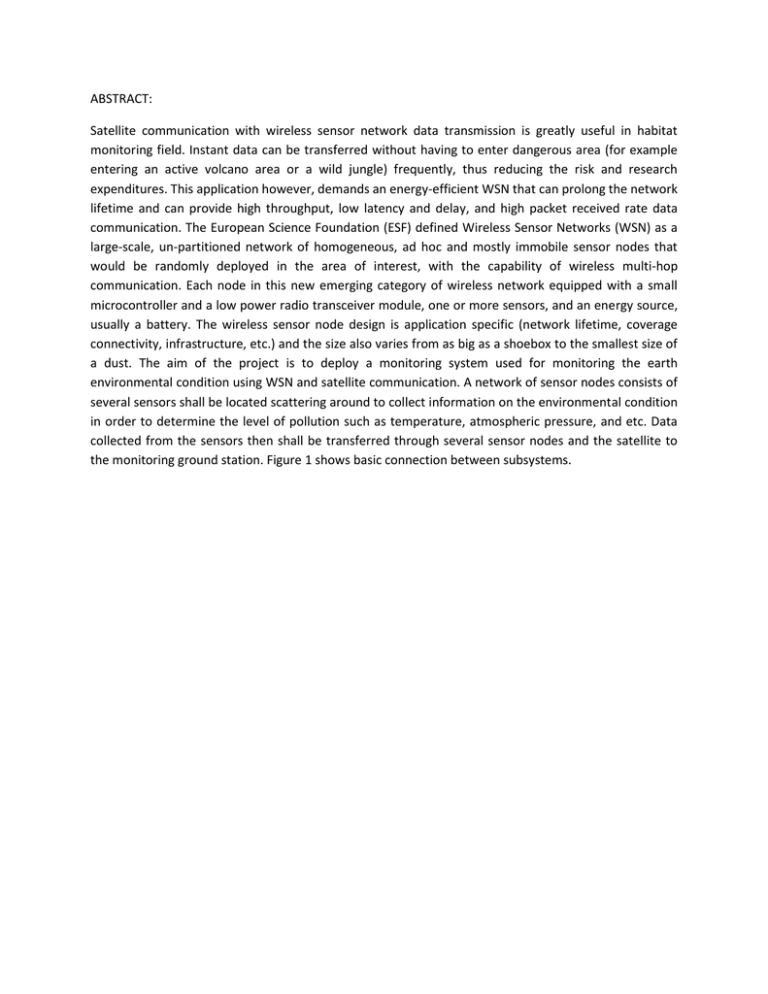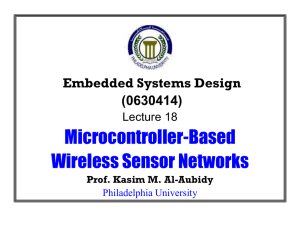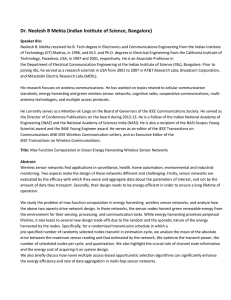ABSTRACT: Satellite communication with wireless sensor ...
advertisement

ABSTRACT: Satellite communication with wireless sensor network data transmission is greatly useful in habitat monitoring field. Instant data can be transferred without having to enter dangerous area (for example entering an active volcano area or a wild jungle) frequently, thus reducing the risk and research expenditures. This application however, demands an energy-efficient WSN that can prolong the network lifetime and can provide high throughput, low latency and delay, and high packet received rate data communication. The European Science Foundation (ESF) defined Wireless Sensor Networks (WSN) as a large-scale, un-partitioned network of homogeneous, ad hoc and mostly immobile sensor nodes that would be randomly deployed in the area of interest, with the capability of wireless multi-hop communication. Each node in this new emerging category of wireless network equipped with a small microcontroller and a low power radio transceiver module, one or more sensors, and an energy source, usually a battery. The wireless sensor node design is application specific (network lifetime, coverage connectivity, infrastructure, etc.) and the size also varies from as big as a shoebox to the smallest size of a dust. The aim of the project is to deploy a monitoring system used for monitoring the earth environmental condition using WSN and satellite communication. A network of sensor nodes consists of several sensors shall be located scattering around to collect information on the environmental condition in order to determine the level of pollution such as temperature, atmospheric pressure, and etc. Data collected from the sensors then shall be transferred through several sensor nodes and the satellite to the monitoring ground station. Figure 1 shows basic connection between subsystems.











